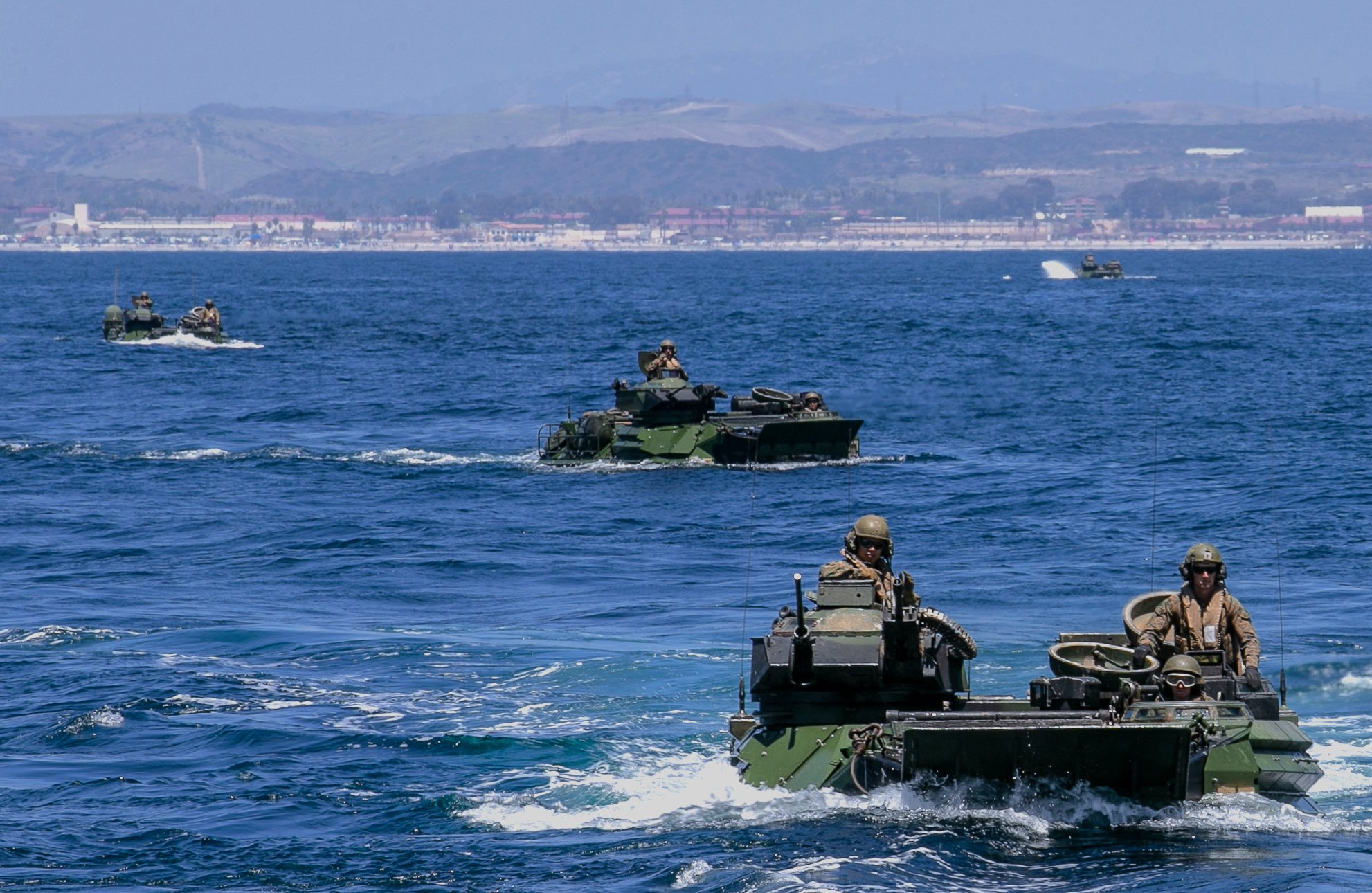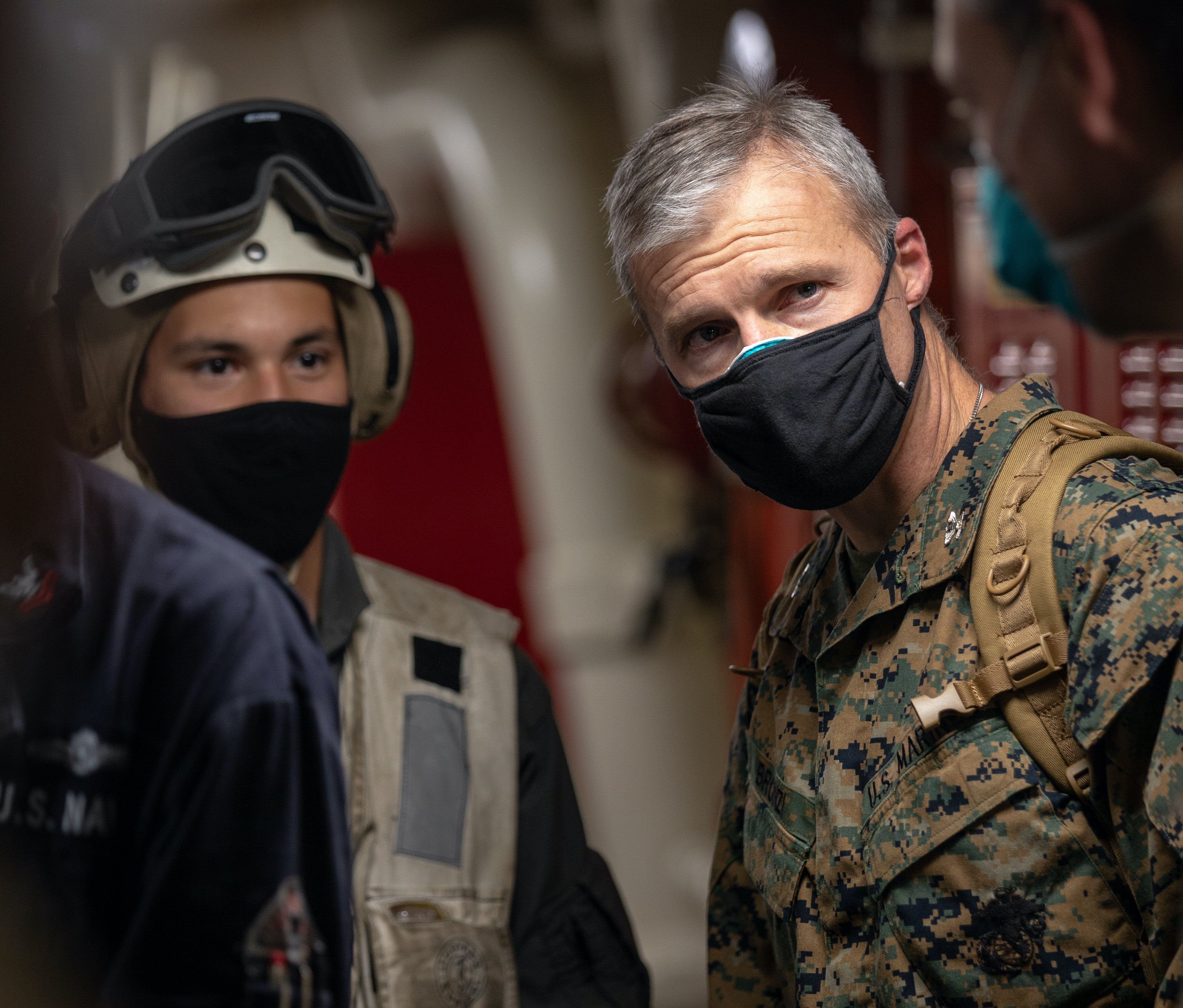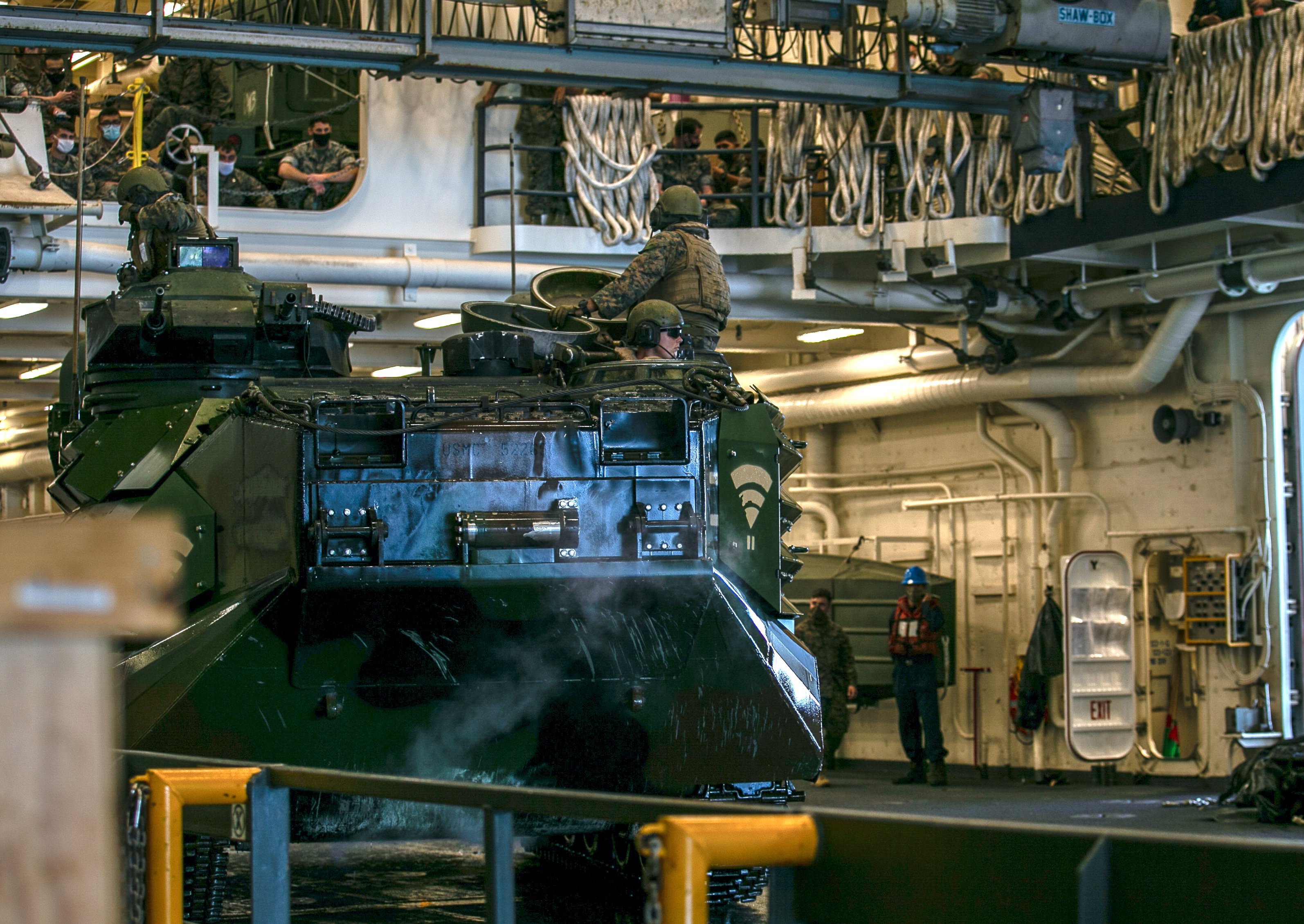
The Marine Corps has begun a deeper investigation into the 15th Marine Expeditionary Unit, after an amphibious assault vehicle sank last year during an integrated Marine Corps-Navy exercise off Southern California killing nine, the service announced Tuesday.
Gen. Gary Thomas, the assistant commandant of the Marine Corps, on Friday appointed Lt. Gen. Carl Mundy “to serve as board president for a command investigation into the facts and circumstances surrounding the forming of the 15th Marine Expeditionary Unit,” the Marine Corps said in a statement. The 15th MEU is on the tail-end of a scheduled deployment to the Middle East and Indo-Pacific region that began last fall as part of the Makin Island Amphibious Ready Group.
Mundy has been serving as commander of Marine Corps Forces Central Command, based at Macdill Air Force Base in Tampa, Fla., since July 2018. The veteran infantry officer has commanded units at the platoon, company, battalion, MEU, Marine Expeditionary Brigade and Naval Task Force levels.
“The investigation will inquire into the formation of the 15th MEU; training and material readiness impacting the formation of the 15th MEU; and higher headquarters oversight of the 15th MEU,” the service stated. “The goal is to ensure the Marine Corps is doing everything possible to prevent this type of mishap from happening again.”
On July 30, 2020, during the MEU-ARG’s first at-sea pre-deployment training exercise, eight infantry Marines and one Navy corpsman riding in an AAV died after the 26-ton vehicle sank as a platoon with Battalion Landing Team 1st Battalion, 4th Marines, was returning to amphibious transport dock ship USS Somerset (LPD-25).
The 15th MEU is one of three rotational Marine air-ground task forces based at Camp Pendleton, Calif., and one of seven Corpswide that train to deploy aboard the Navy’s amphibious ships. Over five decades, the Marine Corps has touted its MEUs as the premier “9-1-1” force, deployed at the “tip of the spear” and able to respond to combat or to a natural disaster or humanitarian crisis.
Each MEU, commanded by a colonel, is formed into four elements: Command, ground combat, aviation and combat logistics. Each subordinate element pulls various detachments into its central unit; in the case of the ground combat element, an infantry battalion gets plussed-up with detachments such as an AAV platoon to formed into a BLT or battalion landing team. Each MEU trains to deploy aboard three amphibious ships, typically a big-deck assault ship that carries most of the aircraft and two smaller transport ships.
In the case of the 15th MEU, the AAV platoon gives amphibious legs to BLT 1/4’s Bravo Company, which serves as its mechanized company. The platoon was sourced from the Camp Pendleton-based 3rd Assault Amphibian Battalion.

The mishap happened on the first day the unit was doing waterborne operations from the Somerset, during a scheduled two-week, at-sea training, the first designed to sort through the challenges and kinks of integrated, blue-green training that usually surface when units don’t normally train together.
Navy Hospitalman Christopher Gnem, 22, of Stockton, Calif.; Cpls. Wesley Rodd, 23, of Harris, Texas, and Cesar Villanueva, 21, of Riverside, Calif.; Lance Cpls. Marco Barranco, 21, of Montebello, Calif., Guillermo Perez, 19, of New Braunfels, Texas, and Chase Sweetwood, 19, of Portland, Ore.; and Pfcs. Bryan Baltierra, 19, of Corona, Calif., Evan Bath, 19, of Oak Creek, Wisc., and Jack Ryan Ostrovsky, 21, of Bend, Ore., died from the mishap.
The day after the sinking, the Marine Corps ordered all waterborne operations suspended and directed new, in-depth inspections of its entire AAV fleet. As of April 2, AAV waterborne operations still remain largely suspended across the Marine Corps. Only the Assault Amphibian School, which is located at Camp Pendleton, “has received a waiver for the purposes of military occupational specialty qualification,” Capt. Andrew Wood, a Marine Corps headquarters spokesman told USNI last week. In addition, “waivers for operational necessity must be approved by a lieutenant general.”
Just three months after the mishap, Lt. Col. Michael Regner, who led BLT 1/4, and Bravo Company’s commander were fired by the I MEF commander, Lt. Gen. Karsten Heckl, who the Marine Corps said also took “appropriate administrative or disciplinary action against seven other personnel whose failures contributed to the mishap.” Officials haven’t offered details about what actions were taken or whether any decisions are pending.
Last month, the 15th MEU’s commander, Col. Christopher Bronzi, was relieved of command by Lt. Gen. Steven Rudder, the Marine Corps Forces Pacific commander, “due to a loss of trust and confidence in his ability to command, following completion of the command investigation.” Replacing him as commander is Col. Fridrik Fridriksson, who previously led the 11th MEU.
The recently-completed investigation ordered by MARFORPAC found the mishap resulted from a “combination of maintenance failures, due to disregard of maintenance procedures, AAV crewmen not evacuating personnel when the situation clearly demanded they be evacuated, and improper training of embarked personnel on AAV safety procedures,” the lead investigator wrote.
He found a long “chain of failures” covering multiple aspects of training, vehicle readiness, maintenance support, safety rules and standard procedures. Among them:

The vehicles that the AAV platoon received from 3rd Amphibian Assault Battalion three months before the platoon officially joined the 15th MEU were largely inoperable and required extensive maintenance. The battalion “did not properly train or equip this AAV Platoon for a very difficult MEU training cycle and deployment,” the investigator wrote. “They formed the platoon late, the platoon was not properly trained and evaluated to join the 15th MEU, and they were assigned AAVs in horrible condition.” It’s unclear in the investigation why the 15th MEU didn’t receive or insist on getting 14 amtracs what were in the most-ready status, including those that had more recently been deployed with the 11th MEU, particularly considering it faced a shorter period to prepare to join the full MEU for the at-sea training with the Makin Island ARG.
The AAV platoon hadn’t received all the required training before joining the 15th MEU in April 2020, and most notable was the lack of the required Marine Corps Combat Readiness Evaluation before it transferred to the MEU. That responsibility fell on the 1st Marine Division commander, both Heckl and Rudder had noted in their endorsements on the investigation, although Rudder wrote that the division commander – at the time was Maj. Gen. Robert Castellvi, currently the Marine Corps’ Inspector General – “is not responsible for any failures that occurred after the MEU composite date and he was not the on-scene commander during the mishap,” so Rudder “decided not to take administrative or disciplinary action” against Castellvi.





